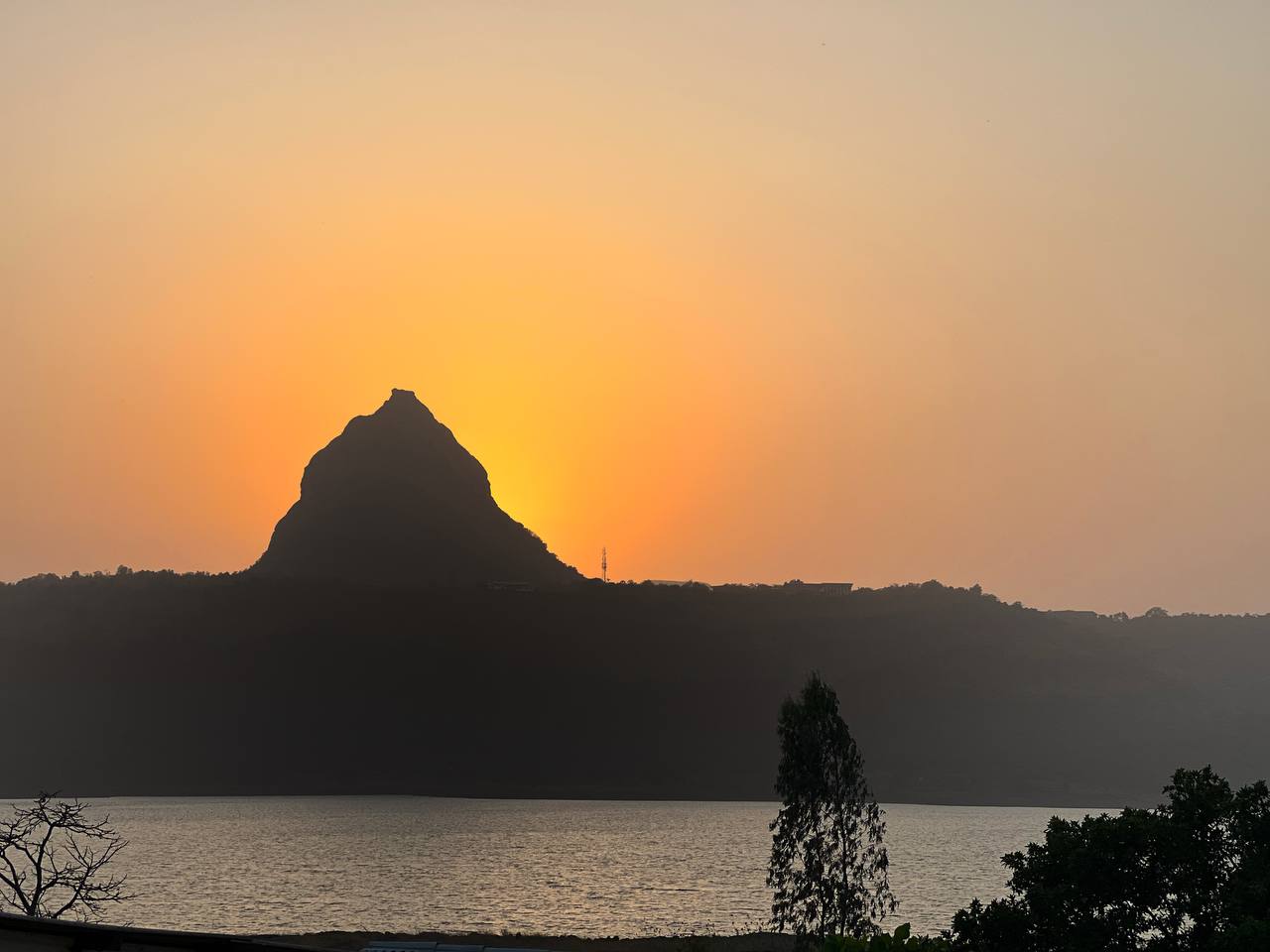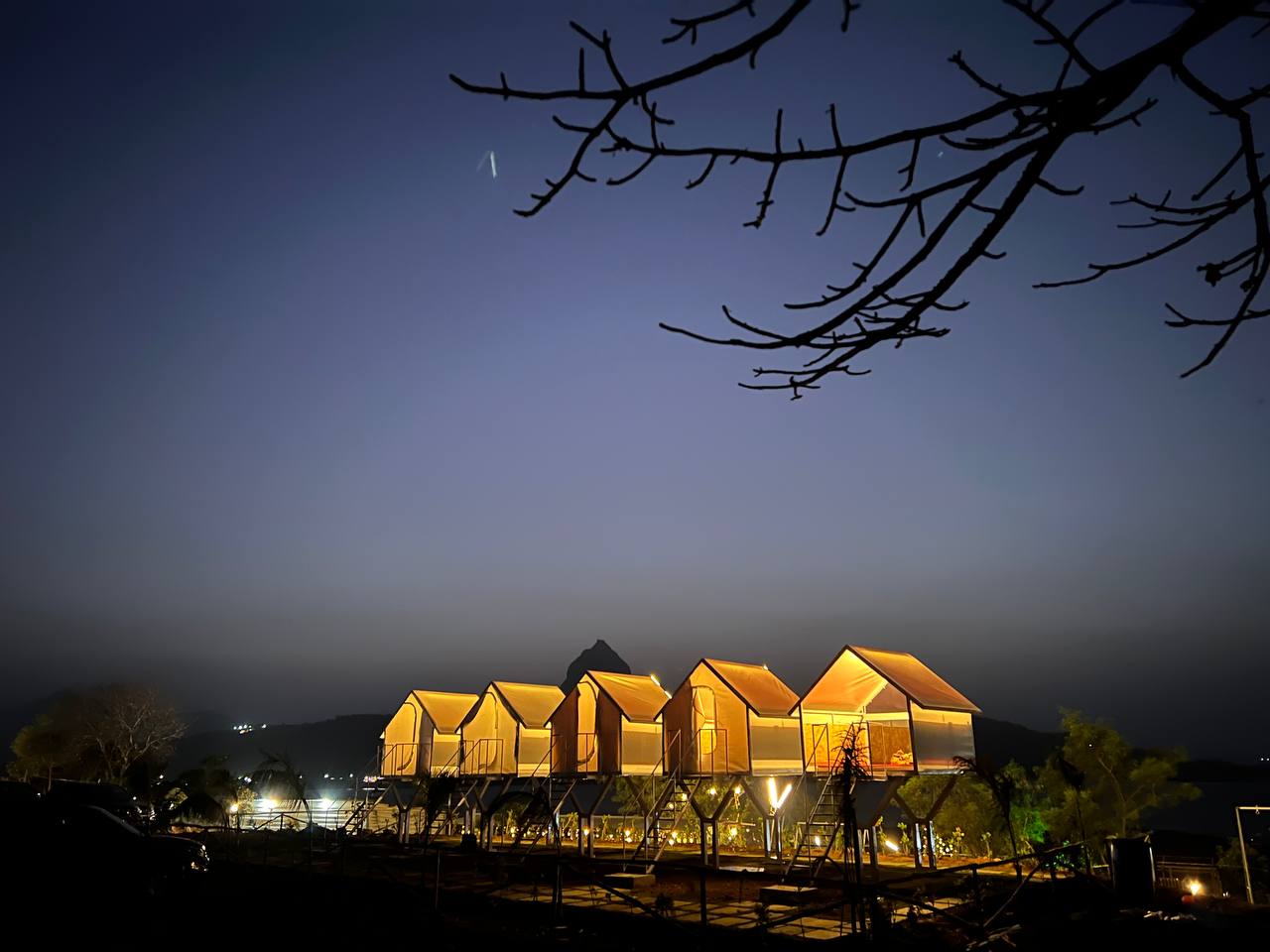
Pawna Lake Through the Lens: Best Photography Spots and Tips
Introduction: A Photographer’s Paradise
Nestled in the Western Ghats just 120 kilometers from Mumbai and 60 kilometers from Pune, Pawna Lake has become a favorite destination for photographers. This scenic reservoir surrounded by historic forts and rolling hills offers an extraordinary canvas that transforms dramatically with changing light and seasons.
This guide highlights the top photography locations, seasonal tips, and essential techniques to capture stunning images of Pawna Lake.
Top Photography Locations
1. Lakeside Camping Areas
The shoreline camping areas provide immediate access to some of Pawna’s most compelling compositions:
Best Spots:
- Western Shore: Unobstructed views across the widest part of the lake
- Rocky Outcrops: Granite formations along the southern shore create natural framing elements
What to Shoot:
- Dawn reflections on still water
- Silhouettes of tents against sunrise/sunset
- Long exposures of starry skies above the water
Pro Tip: “For magical lakeside shots, arrive before sunrise when the lake is perfectly still and creates mirror-like reflections that disappear once the day’s breezes begin.”
2. Tung Fort Viewpoint
Offering the most spectacular aerial perspective of Pawna Lake, Tung Fort sits at an elevation of 1,075 meters.
Best Photo Spots:
- South-facing Bastion: The classic panoramic view of Pawna Lake’s full expanse
- Eastern Wall Ruins: Frames the lake between ancient stone structures
What to Shoot:
- Aerial panoramas of the lake’s serpentine shape
- Historic architecture with landscape backdrop
- Storm clouds approaching over the Western Ghats (monsoon season)
3. Tikona Fort Vantage Points
This triangular fort offers distinctive photography opportunities with unique viewpoints.
Best Photo Spots:
- Northeastern Bastion: Dramatic views of Pawna Lake with mountain backdrop
- Main Gate Frame: Natural stone archway framing the landscape below
Pro Tip: “Use the fort’s distinctive triangular shape as a subject when photographed from the eastern shore in late afternoon, capturing it backlit by the setting sun.”
4. Lakeside Cliffs and Rocky Shores
The perimeter features numerous rocky outcrops that provide excellent foreground elements.
Best Spots:
- Shahapur Shore Rocks: Large boulder formations near Shahapur village
- Thakursai Cliffs: Small elevation on the southeastern shore
What to Shoot:
- Rocks in foreground with lake and mountains behind
- Silhouettes of people fishing from rocky outcrops
Seasonal Photography Guide
Winter Season (December-February)
Key Features:
- Morning mist hovering over the water surface (best between 6-8 AM)
- Exceptional clarity to distant mountains
- Golden grass covering surrounding hills
- Crystal clear night skies for astrophotography
Summer Season (March-May)
Key Features:
- Dramatic contrast between blue skies and golden-brown landscape
- Lower water levels revealing interesting shoreline patterns
- Heat haze creating atmospheric distant views
- Dust-enhanced vibrant sunsets
Monsoon Season (June-September)
Key Features:
- Lush green explosion across previously barren hills
- Dramatic cloud formations and changing weather
- Temporary waterfalls appearing around the lake
- Misty mountains partially obscured by clouds
Pro Tip: “Monsoon at Pawna Lake is all about capturing drama. Watch for moments when dark rain clouds and bright sunshine coexist—these brief windows create extraordinary light conditions.”
Post-Monsoon (October-November)
Key Features:
- Gradually receding greenery creating texture on hillsides
- Full water levels with excellent clarity
- Balanced light conditions throughout the day
Time of Day Guide: Chasing the Perfect Light
Golden Hour Magic
The hour after sunrise and before sunset provides the most magical light:
Morning Golden Hour:
- Winter: 6:45-7:45 AM
- Summer: 6:00-7:00 AM
- Monsoon: 6:15-7:15 AM
- Autumn: 6:30-7:30 AM
Evening Golden Hour:
- Winter: 5:30-6:30 PM
- Summer: 6:15-7:15 PM
- Monsoon: 6:30-7:30 PM
- Autumn: 5:45-6:45 PM
Best Locations:
- Sunrise: Eastern shore near Thakursai village
- Sunset: Western shore camping areas or Tung Fort viewpoint
Night Photography
Pawna Lake’s distance from urban centers creates excellent conditions for night photography:
Best Subjects:
- Star trails above the lake (clearest in winter)
- Milky Way core (visible March-October, best April-June)
- Campsite light painting
- Moonlit landscapes (during full moon periods)
Pro Tip: “For stunning Milky Way photography, visit between April and June when our galaxy’s core is most visible. The lake’s north-facing shores create excellent compositions with the Milky Way arching over the water.”
Essential Photography Gear
Camera Equipment
- Camera: Any DSLR or Mirrorless camera (or recent smartphone)
- Lenses: Wide-angle (16-35mm) for landscapes, Standard zoom (24-70mm) for versatility
- Tripod: Essential for low-light and long-exposure photography
- Filters: Circular polarizer (for reducing reflections), ND filters (for long exposures)
- Extras: Spare batteries, memory cards, lens cleaning kit
Weather Protection
- Monsoon: Rain cover for camera, silica gel packets, waterproof bag
- Summer: Dust protection, UV filters, shade for shooting in direct sun
Technical Settings for Different Scenarios
Sunrise/Sunset Settings
- Mode: Aperture Priority (A/Av)
- Aperture: f/8 – f/11 for good depth of field
- ISO: 100-400 depending on light
- Tip: Consider bracketing (±1 EV) for high contrast scenes
Night/Astrophotography Settings
- Mode: Manual
- Aperture: Widest available (f/1.8 – f/2.8)
- Shutter Speed: 15-30 seconds for stars
- ISO: 1600-6400 depending on camera capabilities
- Focus: Manual focus set to infinity
Composition Techniques for Lake Landscapes
- Reflections: Seek calm morning water, place horizon in the middle
- Leading Lines: Utilize shorelines, pathways, or fort walls to guide the viewer’s eye
- Scale: Include human figures to demonstrate the landscape’s grandeur
- Layering: Create depth with interesting foreground, lake as middle ground, mountains as background
Pro Tip: “Look for interesting rocks or vegetation in the foreground, the lake as middle ground, and mountains or sky as background. This three-layer approach creates depth that transforms flat images into immersive experiences.”
Photography Ethics at Pawna Lake
- Stay on established paths to avoid damaging vegetation
- Ask permission before photographing local residents or other campers
- Respect private property and restricted areas
- Consider how your photographs represent the local community
Conclusion
Pawna Lake offers photographers endless possibilities across seasons, times of day, and photographic styles. The most compelling images tend to combine technical skill with patient observation—waiting for that perfect alignment of light, landscape, and moment.
Whether capturing golden light reflecting on still waters, dramatic monsoon clouds over ancient forts, or star trails above your campsite, Pawna Lake rewards those who take the time to understand its moods and rhythms.
Recent Posts
9 Best Pawna Camping Destinations on Pawna Lake This Monsoon
Pawna Lake Through the Lens: Best Photography Spots and Tips
Monsoon Magic: Why Rainy Season is Secretly the Best Time to Visit Pawna Lake
All Categories
PAWNA LAKE CAMPING BOOKING

Pawna Lake





